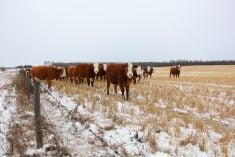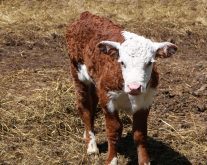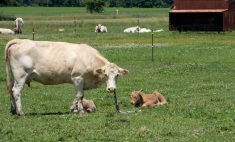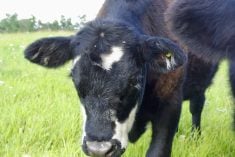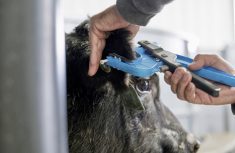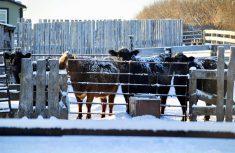It turned out to be Don’s first day of work. Third-year exams at the Western College of Veterinary Medicine had sapped most of his academic capacity. Now he searched for hard-core field experience and the savvy that comes with being a step closer to being a real veterinarian. I looked forward to someone to relieve the tedium of large animal practice as calving season wound down, and the chance to probe a fresh mind and new ideas.
Our first call: the Edward brothers, both bachelors living in a ramshackle cabin along the Arm River about 70 kilometres northwest of Regina. I told Don he would enjoy the elderly bachelors who loved hunting and managed a herd of crossbred blacks, but warned him that every one of the 150 brood cows and heifers was capable of running down strangers. He needed to keep his eyes open.
He asked, “Why did you choose large animal practice? And how have you survived?” I answered with a Thomas Edison quote I had read over coffee in Time magazine before leaving the house. The three great essentials to achieving anything worthwhile are hard work, stick-to-it-iveness and common sense. I could see doubt in Don’s eyes as we hustled along Highway 11 to help an Angus heifer snubbed to the base of a willow clump with 30 pounds of edematous uterus prolapsed under her tail. His squint grew deeper when I said every veterinarian should learn to use a good lariat with a quick-release Honda and carry 40 feet of ¾-inch cotton rope with a braided halter on the working end. I told him I’d show him how to make a rope halter on a slack day through the summer.
Read Also

Canadian Beef Check-Off Agency reports on investments and activities
The check-off agency’s work behind the scenes is what ensures cattle check-off dollars are invested wisely, accounted for transparently and deliver measurable value back to producers and importers.
The brothers had one-half of a cream can of warm water heated on the coal and wood stove when we drove in the yard. Out to the pasture we went. As expected, the heifer had wound herself around the base of a willow clump and glared at us as we drove within range. I slipped the halter over her head and asked Don to dally the long end around the boat hitch on the car, which I had backed against the willows. The plan was that Don would take up the slack when I cut the lariat to release her.
However, the second she could breathe easier, the heifer bolted through an opening in the willow clump and Don tried to tighten up the cotton rope with little success, but he held on tight. The heifer, now at full speed, made a 40-foot arc around the car, breaking the aerial, removed the right rear view mirror and both windshield wipers. She then hit the end of the rope and did a belly flop off the two driver side doors. The uterus hit the back window leaving what might be mistaken for a slaughterhouse shamble. I told Don to hang on and quickly reduced the prolapse — now much smaller in size — inserted a purse-string suture in the vulva and administered a healthy shot of long-lasting antibiotic. The boys asked when they should remove the suture and I suggested that if she lived, they should send her to slaughter in the fall and not to worry about the suture unless they had her in a chute between now and then.
Since then, Don has always carried a good lariat and 40 feet of cotton rope with a halter on the end.
“How much do you charge for something like that,” Don asked on the road home.
“Just the fee suggested in the fee guide — about one-quarter of what it will take to fix the car, but the boys will drop off some steaks the next time they slaughter an animal. Good chance it’ll be the one we just worked on.”




